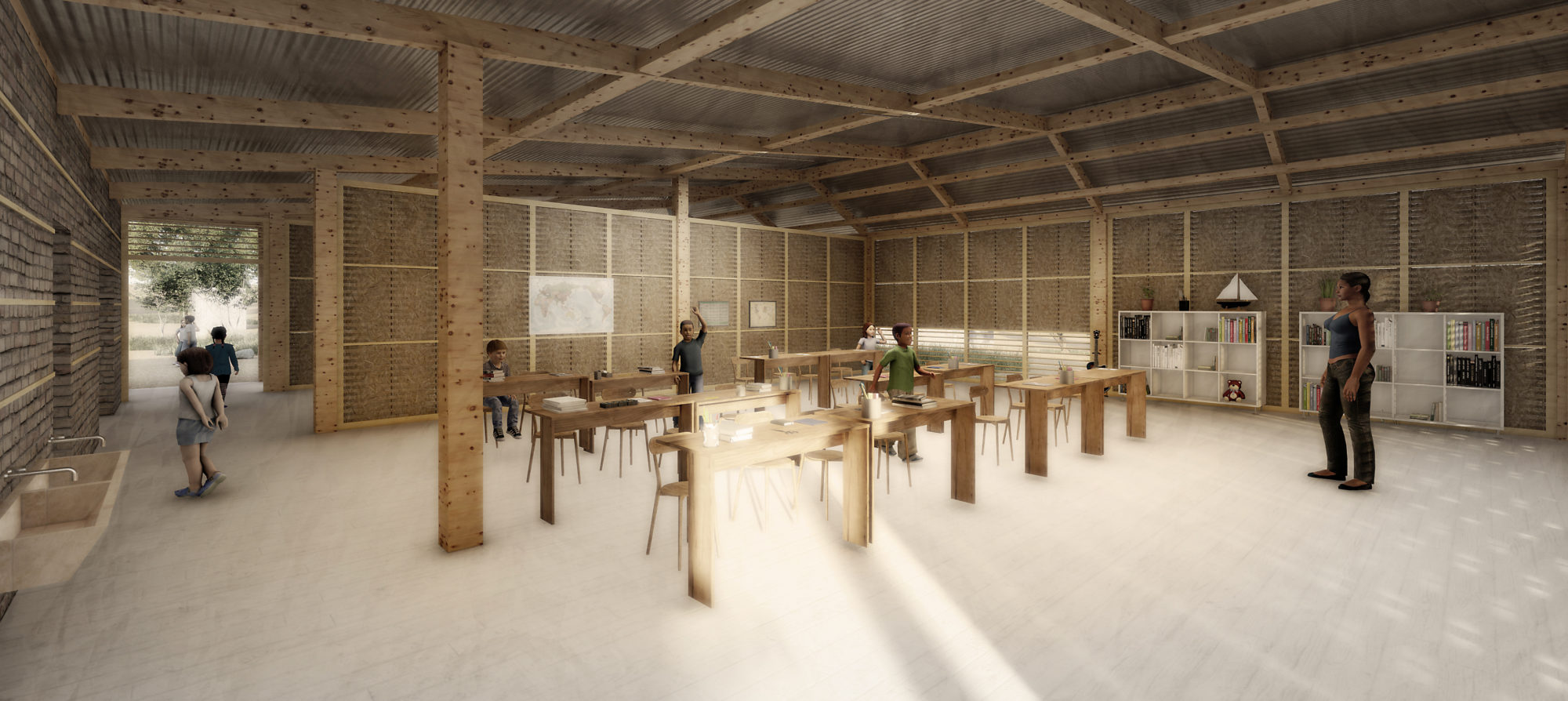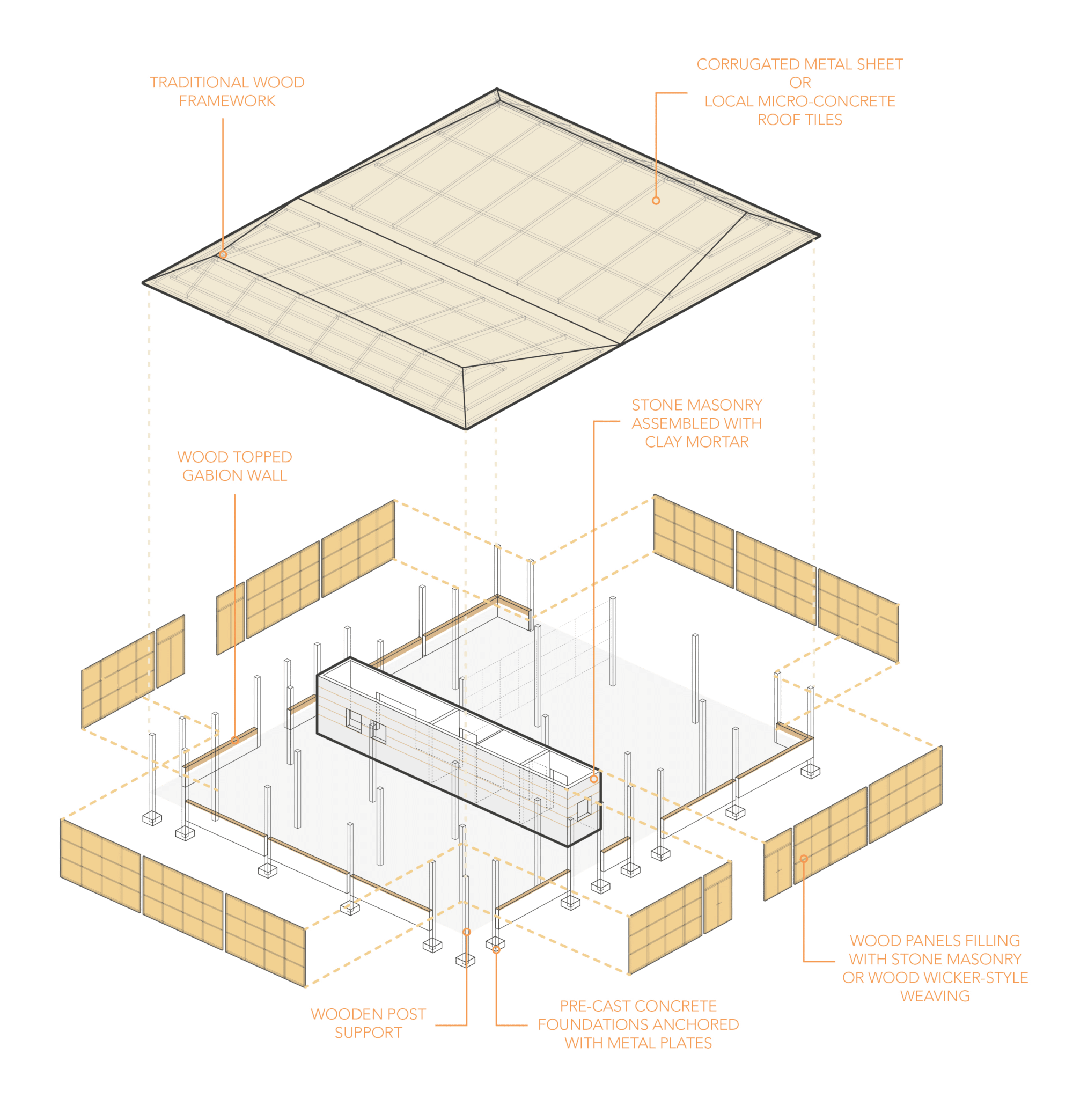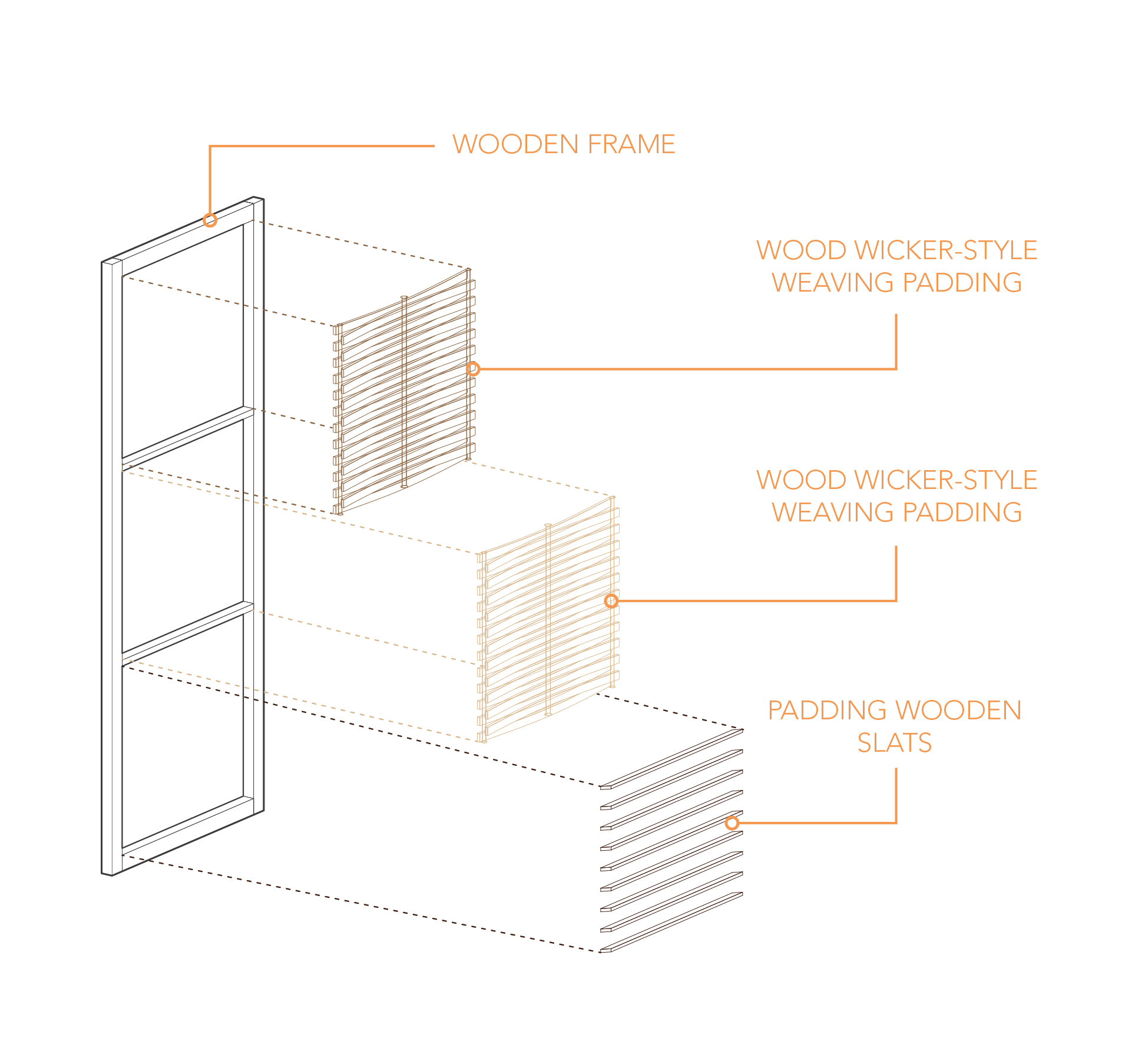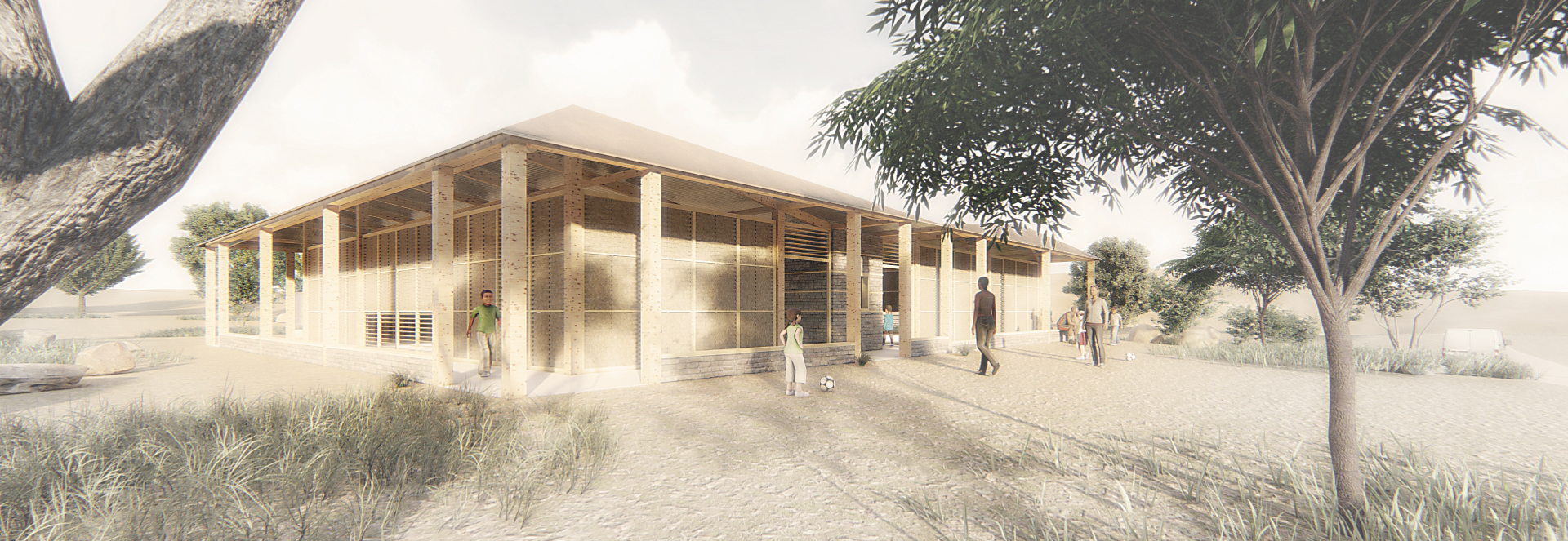
PROGRAMME
(Rural School Haiti Contest)
Construction of a rural school in two phases (phase 1: 110m²; phase 2: 156m²).
The project must take into account the current (post-emergency) situation, potential risks and economic constraints.
LOCATION
TE NWA Community, Cabaret, Haiti.
PLANNING
Issued on September 23, 2019
BUDGET
Under $45,000
RESULT
Finalist
The disasters that affected Haiti urge us to question our ways of handling catastrophies and their consequences. Three principles can be drawn from this proposal : protect, repair and learn.
In its very layout, the school project adapts to its environment’s constraints. The design integrates seismic bracing principles, hurricane-proof roofing orientation (slopes) and floor lifting (flood). Trees are also considered as a natural barrier, but far enough from the structure to ensure its safety if they came to fall.
The techniques here are simple (suited for self-building), allowing the project’s maintenance and evolution to run as a ‘learning work-site’. For instance, the peripheral walls’ modular panel fillings can be replaced (wicker-style weaving, wooden slats, brick laying) or adapted depending on specific needs or potential damage. The school is therefore not only a place for studying, it becomes a means of passing down local crafts and seismic/hurricane-proof construction techniques.
Common sense also involves consideration for resources management. This project was designed to be built with local materials : sisal, gabion, micro-concrete roof tiles and clay as mortar. The school project is part of a virtuous circle by supporting the area’s economic dynamism. The building’s central core acts as a rainwater recovery system supplying water points. Those are vital and help limit epidemic spreads (such as cholera).
As a conclusion, this project aims at repairing, both in a tangible (school) and intangible manner, using this work site as a way to connect people and make them proud of their local know-how.
An optimized and evolutionary design, articulated around a technical core

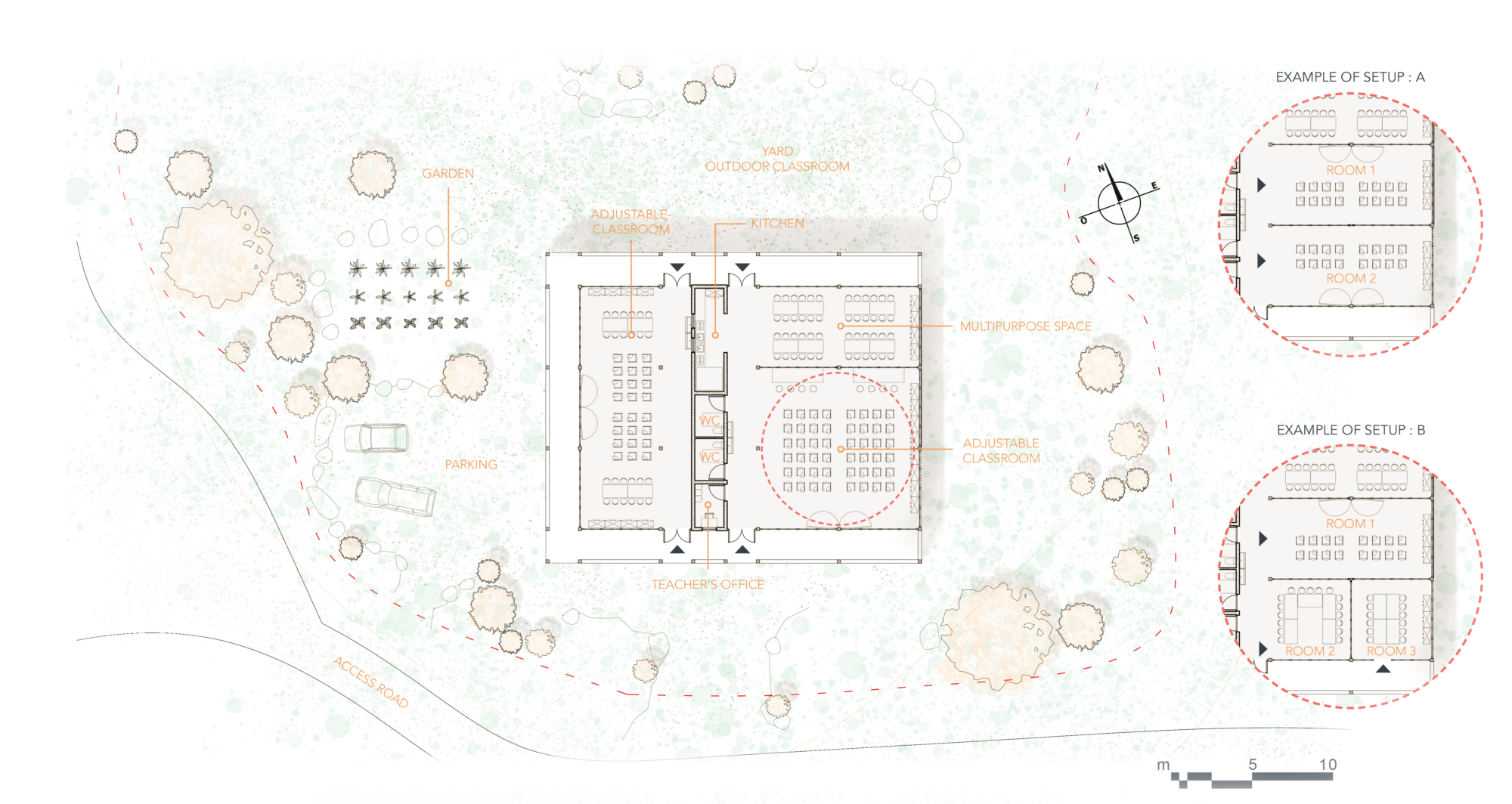

Spaces adaptable to different educational uses
